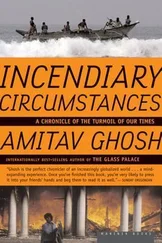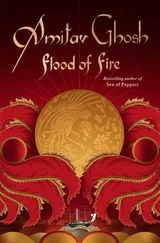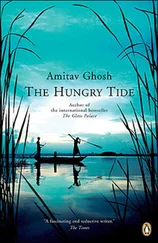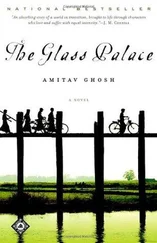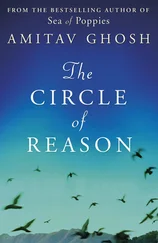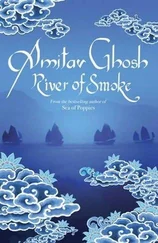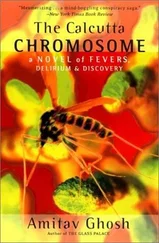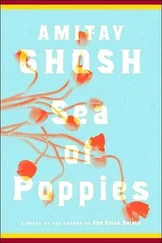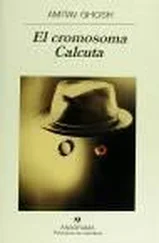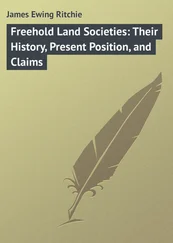86 Equally, the ships:S. D. Goitein thought it possible that the name of the powerful Kârimî merchants association was derived from the Tamil word kâryam, ‘which, among other things, means “business, affairs” ’ (‘The Beginnings of the Kârim Merchants’, p. 183).
87 Among the … nâkhudas:For ‘Pattani-svâmi’ see Goitein, Letters , p. 188, fn. One NMBRNI is mentioned as a shipowner by Madmun (T — S N 25.252 recto, line 13). For a discussion of the meaning of the term nâkhuda (which is spelt in various different ways in Ben Yiju’s documents), see M. N. Pearson’s ‘Indian Seafarers in the 16th. century’, p. 118.
88 ‘between him and me’:Goitein, Letters , p. 64. The letter was addressed to Abu Zikri Sijilmasi, who was in Gujarat.
89 In addition, Ben Yiju … connected with … metalworkers:Bronze objects and utensils that Ben Yiju shipped to his friends are referred to repeatedly in the documents. See, for example, T — S K 25.252, verso, line 11; T — S Misc. Box 24, fragm. 103, recto, line 34;; T — S 18 J 5, fol. 1, line 13; T — S 18 J 4, fol. 18, recto, line 35; & T — S 8 J 7, fol. 23 recto, line 4. Locks are referred to it the following documents, T — S K 25.252, verso, line 11 & T — S 18 J 2, fol. 7, recto, line 7. See also S. D. Goitein, L etters , p. 192–5.
90 The names of these craftsmen:The workmen’s names, spelt ‘Iyârî and LNGY appear to be variants of the Tamil Brahmin name Ayyar and the name-element Linga. Imports of copper, lead and bronze for the workshop are frequently alluded to in his papers. See for example, T — S K 25.252, recto, lines 6 & 28; & T — S 8 J 7, fol. 23, verso, line 6. See also S. D. Goitein, Letters , pp. 192–194.
91 Membership … involved binding understandings:The economy of Fatimid Egypt was, to use Goitein’s words, largely a ‘paper economy’—that is payments were generally made not in cash, but by debt transfers, letters of credit and orders of payment. Cf. S. D. Goitein, ‘Changes in the Middle East (950–1150)’, p. 19; ‘Bankers Accounts from the Eleventh Century AD’, pp. 28–68; and A Mediterranean Society , Vol. I, pp. 241–62. See also W. J. Fischel, ‘The Spice Trade in Mamluk Egypt’, p. 170; and A. L. Udovitch, ‘Commercial Techniques’, p.53–61. Ben Yiju’s papers and accounts suggest that this paper economy was not localized in Egypt or the Middle East. There are several references in Ben Yiu’s papers to credit arrangements between himself, his friends in Aden and Indian merchants.
92 Common sense suggests … the language:The cultural and linguistic diversity of the regions surrounding the Indian Ocean were represented in microcosm in all its major ports. A Portuguese observer, Tomé Pires, who spent two and a half years in Malacca at the beginning of the sixteenth century, reported that eighty-four languages could be heard in the streets of that city — Babel realized! (Cf. Paul Wheatley, The Golden Khersonese , p. 312). Taken at face value, that figure would suggest that communication had effectively ceased in Malacca — or that it was possible only within tiny speech communities.
93 Given what we know:See Kees Versteegh, Pidginization and Creolization: The Case of Arabic , p. 114 ( Current Issues in Linguistic Theory: 33 , Amsterdam, 1984); and Keith Whinnom, ‘Lingue France: Historical Problems’, p. 296 (in A.Valdman (ed.) Pidgin and Creole Linguistics , Indiana University Press, Bloomington, 1977).
94 The Arab geographer Mas’udi:S. Muhammad Husayn Nainar, The Knowledge of India Possessed by Arab Geographers down to the 14th. century AD with special reference to Southern India , p. 95 (Madras University Islamic Series, University of Madras, 1942).
95 Ben Yiju’s usage:See for example, Mas’udi, Murûj , Vol. I, p. 163, and Al-Idrisi, Kitâb , Vol. I, pp. 162–183. The names ‘  în’ and ‘China’ may of course derive from Sanskrit and Prakrit words (see the article ‘The Name China’ by Berthold Laufer in T’oung Pao , II/13, pp. 719–26, 1912, and Paul Pelliot’s article ‘L’Origine du nom de ’, in the same issue (pp. 727–742).
în’ and ‘China’ may of course derive from Sanskrit and Prakrit words (see the article ‘The Name China’ by Berthold Laufer in T’oung Pao , II/13, pp. 719–26, 1912, and Paul Pelliot’s article ‘L’Origine du nom de ’, in the same issue (pp. 727–742).
96 India, … as the Arab geographers well knew:G. Ferrand, Voyage du Marchand Arabe Sulayman , p. 48; and Mas’udi, Murûj , p. 162.
97 For several centuries … a king called the Ballahrâ:Several medieval Arab geographers and travel writers asserted that the ‘Ballahrâ’ was India’s ‘king of kings’, the pre-eminent ruler in the land. Thus, Ibn Khurda-dhbih, writing in the ninth century remarked ‘the greatest king of India is the Ballahrâ or king of kings,’ while one of his contemporaries noted: “The Ballahrâ is the most noble of the princes of India; the Indians recognise his superiority.’ (Gabriel Ferrand, Relations de Voyages et Textes Géographiques, Arabes, Persanes et Turks, Relatifs à l’Extrème-Orient du VIIIe au XVIIIe Siècles , Vol. I, pp. 22 & 42, Ernest Leroux, Paris, 1913). Mas’udi, writing in the tenth century, observed: ‘The most powerful of the kings of India is the Ballahra, the lord of the city of Mankir. Most Indian chiefs turn towards him when they say their prayers.’ ( Murûj , Vol. I, p. 177). Al-Idrisi was to add his considerable authority to these statements a couple of centuries later (see Kitâb , p. 47, and G. Ferrand, Relations , p. 196). See also André Miquel, La Géographie humaine du Monde Musulman jusqu’au milieu du 11e siècle , Vol. II, p. 84 (Mouton, Paris, 1975).
98 An eminent scholar:S. M. H. Nainar, The Knowledge of India , pp. 138–140.
99 .… small kingdoms and principalities:As Ibn Battuta put it: ‘In (the Malabar) there are twelve infidel sultans, some of them strong with armies numbering fifty thousand men, and others weak with armies of three thousand. Yet there is no discord whatever between them, and the strong does not desire to seize the possessions of the weak.’ ( Travels , p. 232).
100 The place … known as ‘Jurbattan’:S. M. H. Nainar, The Knowledge of India , p. 41.
101 After about two days … ‘Budfattan’:S. M. H. Nainar, The Knowledge of India , pp. 29–30. The town is also known as Valarapattanam.
102 For much of the distance:Ibn Battuta, Travels , p. 232.
103 ‘Dahfattan’ … lies:S. M. H. Nainar, The Knowledge of India , p. 32. The town is also known as Dharmapattanam.
104 A little further … Pantalayini Kollam:S. M. H. Nainar, The Knowledge of India , p. 35.
105 Cabrai delivered a letter:Cf. K. N. Chaudhuri, Trade and Civilisation , p. 68.
106 The Portuguese fleet sailed:Cf. R. S. Whiteway, The Rise of Portuguese Power in India 1497–1550 , pp. 86–7.
107 A year … later … da Gama returned:Cf. George D. Winius, ‘From Discovery to Conquest’, p. 224, (in Foundations of the Portuguese Empire, 1415–1580 , by Bailey W. Diffie and George D. Winius, University of Minnesota Press, Minneapolis, 1977).
108 ‘The heathen [of Gujarat]’:Quoted by M. N. Pearson, in ‘Indian Seafarers in the Sixteenth Century’, p. 121.
109 ‘between resistance and submission’:M. N. Pearson, Merchants and Rulers , p. 69. See also C. R. Boxer, The Portuguese Seaborne Empire, 1415–1825 , p. 46 (A. A. Knopf, New York, 1969).
Читать дальше
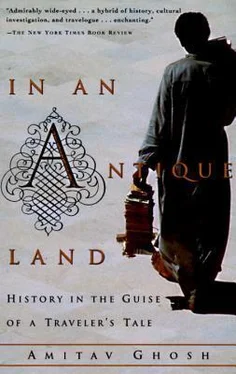
 în’ and ‘China’ may of course derive from Sanskrit and Prakrit words (see the article ‘The Name China’ by Berthold Laufer in T’oung Pao , II/13, pp. 719–26, 1912, and Paul Pelliot’s article ‘L’Origine du nom de ’, in the same issue (pp. 727–742).
în’ and ‘China’ may of course derive from Sanskrit and Prakrit words (see the article ‘The Name China’ by Berthold Laufer in T’oung Pao , II/13, pp. 719–26, 1912, and Paul Pelliot’s article ‘L’Origine du nom de ’, in the same issue (pp. 727–742).